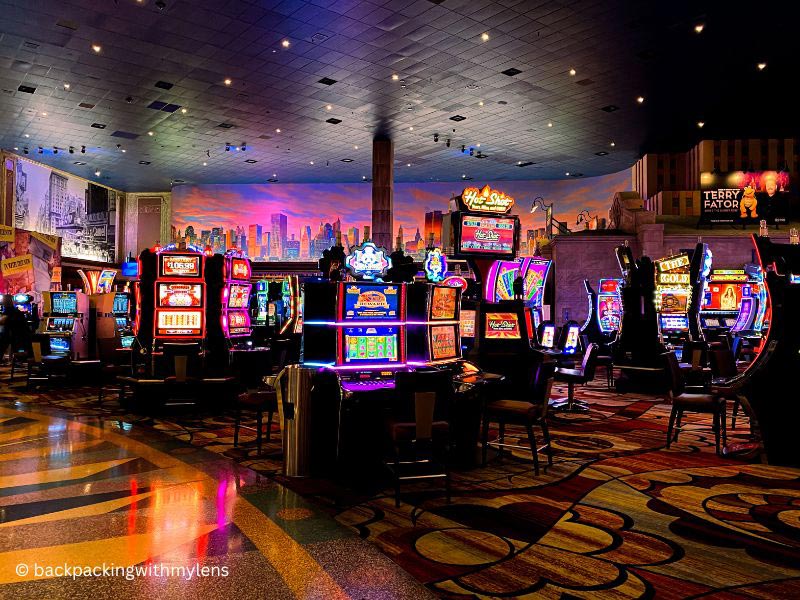The saga of fruit machines is a captivating journey that reflects the evolution of entertainment and wagering over the years. Beginning in their modest origins in the late 19th century to growing into a mainstay in casinos throughout the globe, these games of fortune have gone through notable evolutions. Slot machines have mesmerized players with their colorful graphics, immersive themes, and the hope of wealthy prizes.
At first made as mechanical devices with rotating reels and few images, slot machines have grown into sophisticated electronic games that include innovative features and interactive features. Currently, they welcome millions of players, each aspiring to win big with just the lever pull of a handle or the touch of a button. Exploring the intriguing background of these games discloses not just the story of a popular activity, but also a depiction of cultural shifts and tech developments over the decades.
The Origins of Slot Machines’ History
A tale of slot machines starts in the final years of the 19th century, a time when machines were becoming popular in places of amusement. The first true slot machine was invented by Charles Fey in 1895, referred to as the Liberty Bell. This machine featured three spinning reels and five symbols: hearts, diamonds, spades, a horseshoe, and the legendary Liberty Bell. Players pulled a lever to spin the reels, and if the symbols aligned in a specific combination, players won a payout. Fey’s invention quickly captured the attention of gamblers and paved the way for future developments in casino slots games.
As the concept of the slot machine gained popularity, numerous inventors sought to improve upon Fey’s design. By the early 1900s, slot machines were becoming a frequent presence in saloons and amusement parks. In 1907, the initial electromechanical slot machine was launched by Herbert Mills, featuring a more intricate system of payout mechanisms and the iconic fruit symbols that are still linked to slots today. This evolution marked a significant shift in the gaming industry, as machines became more engaging and user-friendly, attracting more players.

The popularity of slot machines remained high throughout the first half of the 20th century, resulting in their extensive use in casinos across the United States. However, as legal restrictions on gambling during the Great Depression posed challenges for the industry. Many machines were banned, but this did not halt innovators. Instead, they adapted by creating machines that dispensed candy or gum instead of cash prizes, effectively circumventing the restrictions while still offering the thrill of a casino slots game. This ingenuity kept the spirit of gambling intact, setting the stage for the eventual resurgence of slot machines in modern casinos.
Evolution of Casino Slot Technology
The story of gambling machines commenced in the late 19th era with the invention of the initial mechanical slot machines. Charles Fey, a San Francisco engineer, introduced the Liberty Bell slot machine in 1895, which boasted three rotating reels and five images: hearts, diamonds, spades, a horseshoe, and the Liberty Bell itself. This straightforward yet enthralling layout laid the groundwork for the progress of casino slots game, creating an instant appeal for players looking for fun and a chance to win.
As innovation progressed, so did the appearance and capabilities of gambling devices. By the central 20th century, electronic mechanical machines surfaced, adding electric parts to boost gameplay and increase payout possibilities. These improvements allowed for greater complexity features like multiple paylines and larger jackpots. The gambling venues adopted these innovations, resulting in the rise of slot machines as a major provider of revenue within the gaming industry, fundamentally transforming the casino slots game experience.
The late 20th and beginning 21st hundred years introduced the digital revolution, causing the launch of video gambling machines. These machines changed out traditional reels with screens, allowing even more innovation in themes and gameplay mechanics. Gamblers could now experience immersive graphics and sound effects, along with dynamic bonus rounds. The move to web-based gaming further changed the slots experience, rendering slots reachable to a global population whenever and everywhere, thus marking a new era in the progression of gambling device advancements.
A Cultural Influence of Gaming Machines
Slot machines have become not only a form of leisure; they have integrated into the fabric of mainstream culture. Across movies and television shows to music and literature, these famous gaming machines often act as emblems of luck and risk. Films like The Casino and Ocean’s 11 prominently highlight slots, depicting them as exciting yet unpredictable elements of the casino atmosphere. 789bet Their distinct attraction lies in the sound of coins clinking, the revolving reels, and the bright blinking lights, which in unison create an exhilarating atmosphere that draws people in.
Moreover, slot machines have shaped social gatherings and events, making them a focal point in casinos and gaming venues. Many people do not just visit a casino to gamble; they go for the entire experience, which includes the social interactions and the lively ambiance surrounding these machines. Special contests and themed gaming nights centered around slots also highlight their popularity, fostering community engagement and collective fun among players. This social element has contributed to the machines’ enduring popularity.
The advancement of technology has also changed this cultural impact. Digital and online slots have broadened access to these games far beyond the walls of physical casinos. Players can now enjoy their favorite casino slots game from home or on the go, leading to the rise of online communities and forums where enthusiasts share strategies and experiences. The continuous innovation in game design and the integration of storytelling have kept the cultural importance of slot machines alive, attracting younger audiences while maintaining a connection to their cultural roots.
